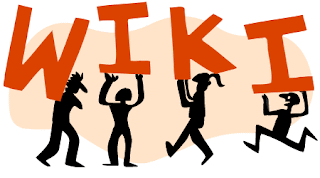 In this digital era, technology is continually evolving. Years later in 2004, Web 2.0 tools such as wikis and social networking sites (Facebook, MySpace, Twitter etc) have skyrocketed in the number of users. Then, most of the users are dominated by the students from all over the world. Therefore, nowadays it becomes an issue in the educational world.
In this digital era, technology is continually evolving. Years later in 2004, Web 2.0 tools such as wikis and social networking sites (Facebook, MySpace, Twitter etc) have skyrocketed in the number of users. Then, most of the users are dominated by the students from all over the world. Therefore, nowadays it becomes an issue in the educational world. When wikis and social networking sites are integrated into classroom, does not mean that it will automatically engage students in learning. Planning for integration requires rethinking teaching strategies and techniques to take advantage of their full potential. There are two major pointsthat highlighted in this essay. First are collaborative projects. This technology tool is ideal for project-based learning, cross curricular projects in middle school teams, and thematic units. For example, exhibition orfair projects which could be set up for middle or high school students to brainstorm ideas for and plan the projects. Initially it would mostly be brainstorming, posting ideas and information to back them up with text, images or video. Another example is collaborative textbooks and literature circles.Instead of sharing their thoughts on paper, they could post them to the wikis or social networking sites, respond to their peers’ thoughts or questions and best of all preserve this work for the next class to review at some time during their exploration of the same novel.
When wikis and social networking sites are integrated into classroom, does not mean that it will automatically engage students in learning. Planning for integration requires rethinking teaching strategies and techniques to take advantage of their full potential. There are two major pointsthat highlighted in this essay. First are collaborative projects. This technology tool is ideal for project-based learning, cross curricular projects in middle school teams, and thematic units. For example, exhibition orfair projects which could be set up for middle or high school students to brainstorm ideas for and plan the projects. Initially it would mostly be brainstorming, posting ideas and information to back them up with text, images or video. Another example is collaborative textbooks and literature circles.Instead of sharing their thoughts on paper, they could post them to the wikis or social networking sites, respond to their peers’ thoughts or questions and best of all preserve this work for the next class to review at some time during their exploration of the same novel.
The second isonline resources for classroom use. A list of websites that provided appropriate information related to subject content is provided by the teacher for student use during the school year. It is possible to create and postclass notes, parental and student communication, handouts, course syllabus, course links and resource notes, school or class calendar, teacher information page, school newspaper, and platform for peer review of student work.
However, in 2006, Canole, de Laat, Dillon, and Darby reported student frustrations were attributed to the Web 2.0 applications being misused or to the instructor failing to provide appropriate support for the technology itself. There are some inconsistencies in positive feedback regarding the use of Web 2.0 technologies especially wikis and social networking sites. These inconsistencies were related to technical issues, instructors managing group work, and student expectations of how the instruction should be delivered. Therefore, these tools and practices should lead to pedagogical innovations in education. Then, ambiguity must be reduced so students are aware of what is expected in the use of these technologies and instructors know how to best utilize them.
These tools have changed the way we interact with each other both socially and educationally. Public schools and universities are exploring the use of these emerging tools to increase the effectiveness of instruction. The first step in this transition is encouraging teachers to try the new technology and providing support as they struggle to learn and understand how to use it. Once teachers are comfortable with the technology, they are free to integrate the use of social software into their classes creatively. Use of current software helps to prepare the next generation of students to be effective 21st century learners which will lead to a better educational world.

Again, the creativity and strategy of teacher is always needed to direct the technology itself.
ReplyDelete